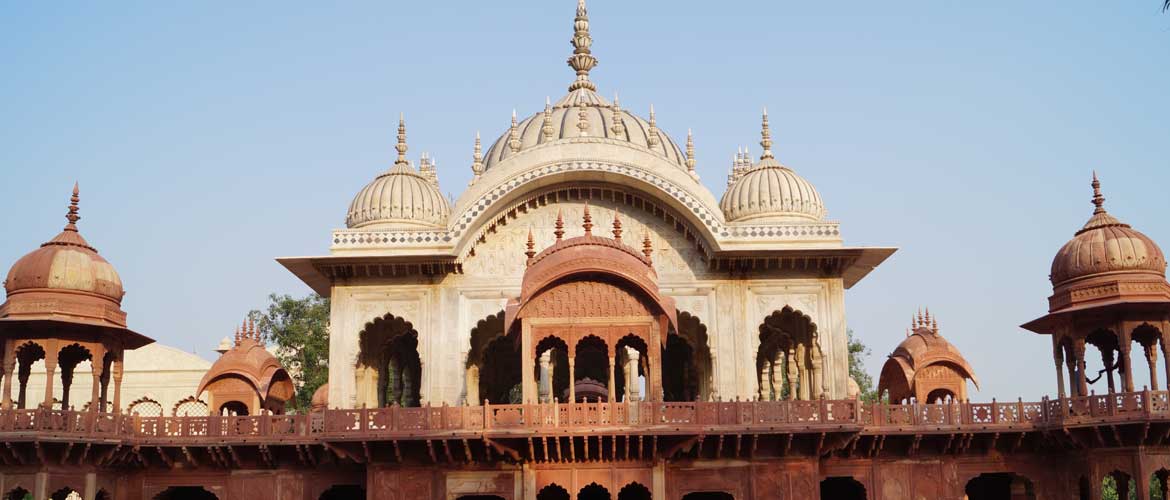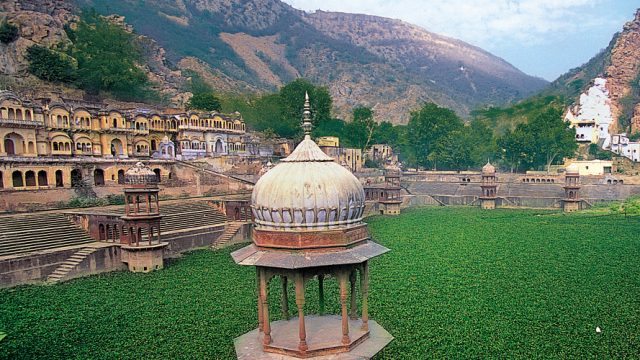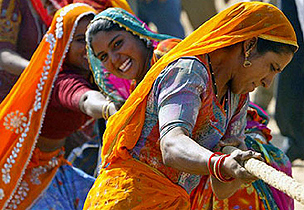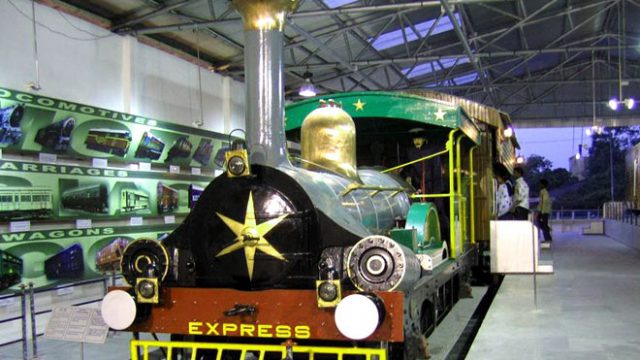Most Rajasthan Roadways’ buses racing down to Alwar have ‘Matsyanagar Aagar (depot)’ painted on their
Historians are divided on the origin of the modern name Alwar. Some say it is a corruption of Salwapur, Salwa being the name of a tribe that lived here. Others say it is a corruption of Aravalpur, Aravallis being the hill range running through the district. Still others see it as a corruption of Alpur, the name of the city founded by Maharaja Alaghraj in 1049.
Legends apart, the oldest extant thing in the city today is the Bala Qila, built by the Nikumbha Rajputs in the 10th century. The fort spreads over the surrounding hills, which, along with the nearby lakes, are Alwar’s most alluring assets. If you come during the monsoon, they are bright green; if you come in the dry season, they are ruddy and rocky.
THING TO SEE AND DO
Alwar is dotted with heritage buildings. However, the City Palace, a sprawling complex, is consumed by government offices, with only a rooftop museum for consolation; the Vijai Mandir Palace is locked up owing to a legal dispute; the Bala Qila is with the police; and the guard at Fateh Jung ka Gumbad may or may not turn up, and the tomb may remain locked during your visit. That one manages to enjoy one’s stay in Alwar, despite these hurdles, is an indication of its charms.
Fateh Jung ka Gumbad
A five-storey medieval tomb, Fateh Jung ka Gumbad outclasses all its contemporaries in Delhi, barring the tomb of Emperor Humayun. It is the easternmost of Alwar’s monuments, lying just across the railway line, close to the Bharatpur Road. The tomb stands amid a walled garden, which houses a school.

Purjan Vihar
A short walk away from Moti Doongri, towards the railway line, stands RR College, once known as the Vinay Vilas Palace. The building is worth a look from up close, and from here, you can head to Purjan Vihar, or Company Bagh, as it is called. This is a beautiful garden with a large, domed summer house, called Shimla, set in a trough amid the rich verdure.
From Company Bagh, head up the Church Road. By evening, this road is a busy market, but in the morning you can stop and admire the old havelis here. At the end of the road lies Hope Circus, a traffic island with shops on the street level and a temple above. Seven streets radiate outwards from the circle. The fifth from Church Road leads to the Clock Tower and has the Kalakand Market strung along it. The fourth street from Church Road leads to the Tripolia Gateway and on to the City Palace complex. From outside, Tripolia looks like an unremarkable gate way, but small shrines have been built into its corners. On either side of the gate, while going towards City Palace, are old markets, called Sarafa Bazaar and Bajaja Bazaar. Both are famous for the gold ornaments sold at the shops.

City Palace
The City Palace complex is accessed through a gateway with projecting balconies on either side. Beyond the gate lies an open ground with Krishna temples on all four sides. The City Palace, Sagar, a tank, and Moosi Rani ki Chhatri are located just behind these temples.
Although the building has been completely taken over by offices, one can nevertheless admire the architecture and ornamentation of this palace built in 1793 by Raja Bakhtawar Singh. There is also a museum at the top. It has three sections: the first hall has royal robes and clay toys, an interesting exhibit here being the bicycle of Maharaja Jai Singh with three hub gears and brakes built into its pedals. The second hall is a storehouse of paintings, including large canvases of notable Central Asian conquerors, which includes Timur and also, curiously, Aurangzeb, an Indian. The third has a display of weapons, including the swords of Akbar and Jehangir.
Entry Indians ₹5; Foreigners ₹50 Timings 10.00am-5.00pm, Closed Mondays
Vijai Mandir Lake Palace
This beautiful palace, built in the year 1918, was the royal residence of Maharaja Jai Singh. It is a sprawling building, but it lies locked up because of family disputes. The palace is off-limits to tourists and cannot be seen from the front but you can get a good view of it from the shore of the lake behind it. The road past the lake leads up to the Bala Qila.

Bala Qila
The City Palace complex forms the eastern extremity of Alwar, and beyond it run the Aravallis, with Bala Qila standing guard atop them. The fort’s walls spread out over the hills like tentacles, piercing the green cover in wild sweeps. The name Bala Qila (Young Fort) is ironic, as it is the oldest extant structure in town, dated to 928 CE, when the Nikumbha Rajputs were in power. There’s little of worth within the fort – the Durbar Hall at the top now houses Alwar Police’s wireless room – but the 10-km drive is its own reward. The road is good, the tree cover dense all along, and the majestic old wall, with steps built along it, surfaces from time to time. The fort is entered through Jai Pol, which remains open from 6.00 am to 7.00 pm on all days but Tuesdays and Saturdays, when it closes at 9.00 pm for the convenience of devotees visiting the Karni Mata Temple down a hillside.
While entry into the inner fort at the top is free, visitors need to sign in the register kept with the sentry before they can walk around.
WHERE TO STAY
The most famous of the heritage properties here is 12 km away, the Neemrana-run The Hill Fort Kesroli (Cell: 09587885005, 09414050053; Tariff: ₹3,000-10,000).
About 7 km from Alwar is Hotel Burja Haveli (Tel: 0144-2888390-91, Cell: 09929123088; Tariff: ₹2,500-4,800). Situated in Burja Village, the 240-year-old haveli is equipped with a conference hall, pool and a restaurant serving Rajasthani, Indian, Continental and Chinese fare.
The Circuit House (Tel: 2700650; Tariff: ₹76-1,320), formerly Maharaja Jai Singh’s guesthouse, is another heritage option. Clarks Inn Alwar (Tel: 2700600; Tariff: ₹3,000-6,000) in Shanti Kunj is a 3-star property.
Hotel Aravali (Tel: 2332883-316; Tariff: `₹1,800-5,000) offers clean accommodation opposite the railway station. RTDC’s Hotel Meenal (Tel: 2347352; Tariff: ₹1,100-1,300) lies a little out of town but it is a safe bet.
WHERE TO EAT
The city has only one good restaurant, Prem Pavitra Bhojanalaya, with a branch close to the bus terminus and one at Moti Doongri. They serve sim ple Rajasthani fare; try their karhipakori or gatte ki sabzi with missi roti. The other indulgence you must not deny yourself is Alwar’s famous milk cake, or kalakand, as it is locally called. Baba Thakur Das and Sons, set up at Kalakand Market is the most famous sweet shop here.
When to go October to March is the official season, but monsoon is magical Air Nearest airport: Sanganer Rail Nearest rail: Alwar
Alwar City Palace
Bajaja Bazaar
Bala Qila





